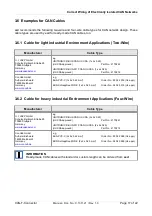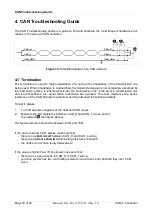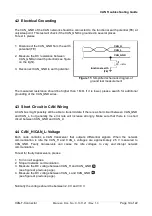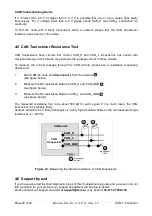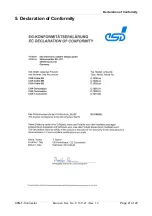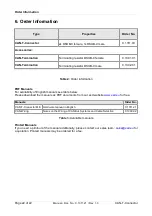
CAN Troubleshooting Guide
4. CAN Troubleshooting Guide
The CAN Troubleshooting Guide is a guide to find and eliminate the most frequent hardware-error
causes in the wiring of CAN networks.
Figure 10:
Simplified diagram of a CAN network
4.1 Termination
The termination is used to match impedance of a node to the impedance of the transmission line
being used. When impedance is mismatched, the transmitted signal is not completely absorbed by
the load and a portion is reflected back into the transmission line. If the source, transmission line
and load impedance are equal these reflections are avoided. This test measures the series
resistance of the CAN data pair conductors and the attached terminating resistors.
To test it ,please
1.
Turn off all power supplies of the attached CAN nodes.
2.
Measure the DC resistance between CAN_H and CAN_L at one end of
the network (see figure above).
The measured value should be between 50 Ω and 70 Ω.
If the value is below 50 Ω, please make sure that:
- there is no
short circuit
between CAN_H and CAN_L wiring
- there are
not more than two
terminating resistors connected
- the nodes do not have faulty transceivers.
If the value is higher than 70 Ω, please make sure that:
- there are no open circuits in CAN_H or CAN_L wiring
- your bus system has two terminating resistors (one at each end) and that they are 120 Ω
each.
Page 18 of 22
Manual • Doc. No.: C.1311.21 / Rev. 1.3
CAN-T-Connector
120
CAN_H
CAN_GND
CAN_L
CAN_L
CAN_H
CAN_GND
V
2
3
1
V
120
1














